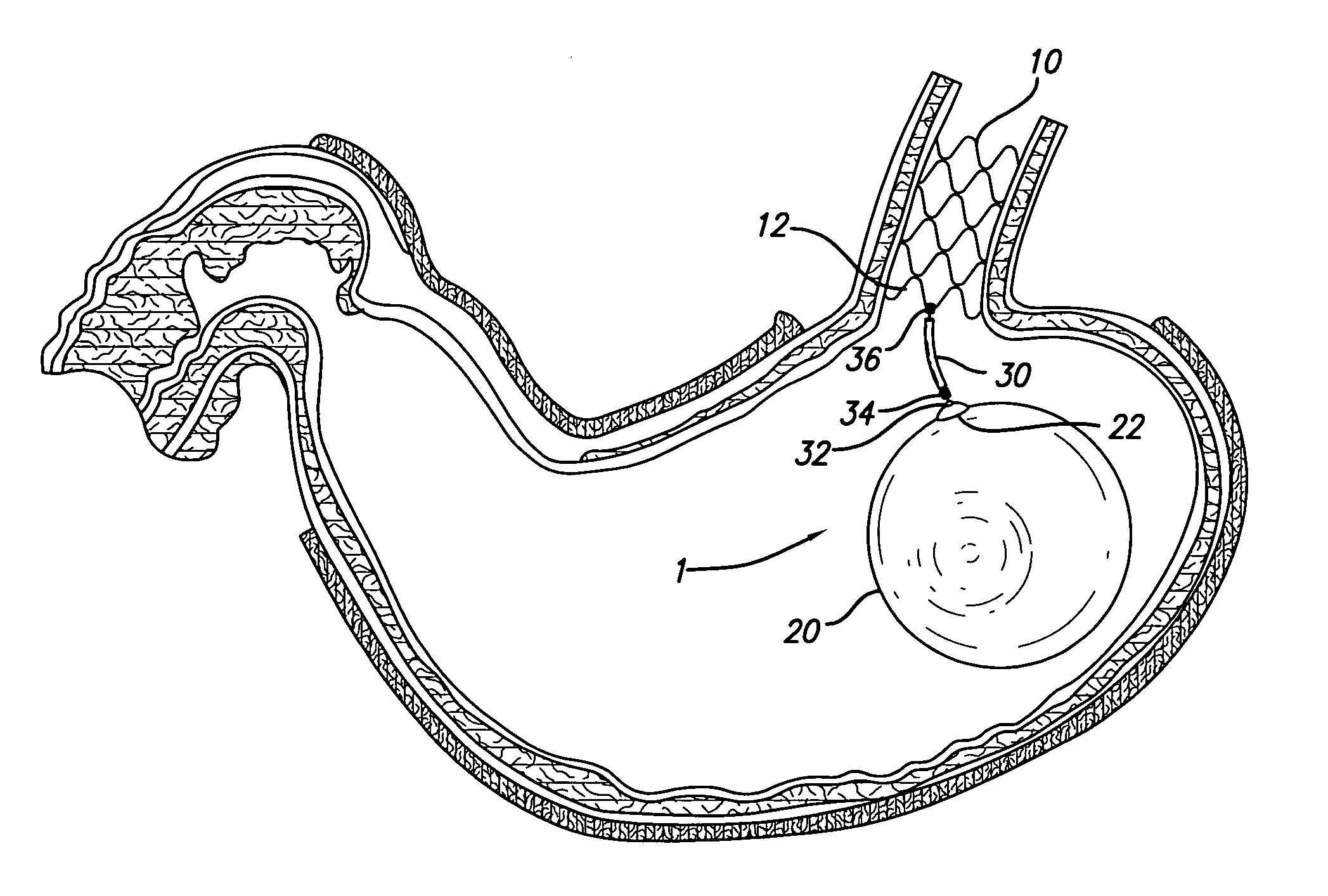Stented anchoring of gastric space-occupying devices
a space-occupying device and stenting technology, applied in the field of medical devices and methods, can solve the problems of large incisions and long recovery time, clinically suboptimal procedures, and unsustained weight loss, and achieve the effect of reducing the risks associated and facilitating access to procedures and devices
- Summary
- Abstract
- Description
- Claims
- Application Information
AI Technical Summary
Benefits of technology
Problems solved by technology
Method used
Image
Examples
Embodiment Construction
[0011]The present invention provides for space occupying devices having an expandable, space-occupying member tethered to an anchoring stent. The stent itself is typically of the self-expanding variety that can be easily deployed within, e.g., a patient's esophagus or stomach, and remain in a generally fixed relationship relative to the patient's stomach cavity. The expandable member is tethered to the stent in a manner allowing the expandable member to reside within the patient's stomach. This system has certain advantages over other known systems, including allowing for a much less traumatic method of anchoring or otherwise retaining the expandable member within the stomach as compared to other systems. For example, methods described in U.S. patent application Ser. No. 09 / 816,850, filed Mar. 23, 2001, which is commonly owned is and incorporated herein by reference in its entirety, rely on the use of suture or other fastening means that penetrate the stomach wall to anchor an expan...
PUM
 Login to View More
Login to View More Abstract
Description
Claims
Application Information
 Login to View More
Login to View More - R&D
- Intellectual Property
- Life Sciences
- Materials
- Tech Scout
- Unparalleled Data Quality
- Higher Quality Content
- 60% Fewer Hallucinations
Browse by: Latest US Patents, China's latest patents, Technical Efficacy Thesaurus, Application Domain, Technology Topic, Popular Technical Reports.
© 2025 PatSnap. All rights reserved.Legal|Privacy policy|Modern Slavery Act Transparency Statement|Sitemap|About US| Contact US: help@patsnap.com



